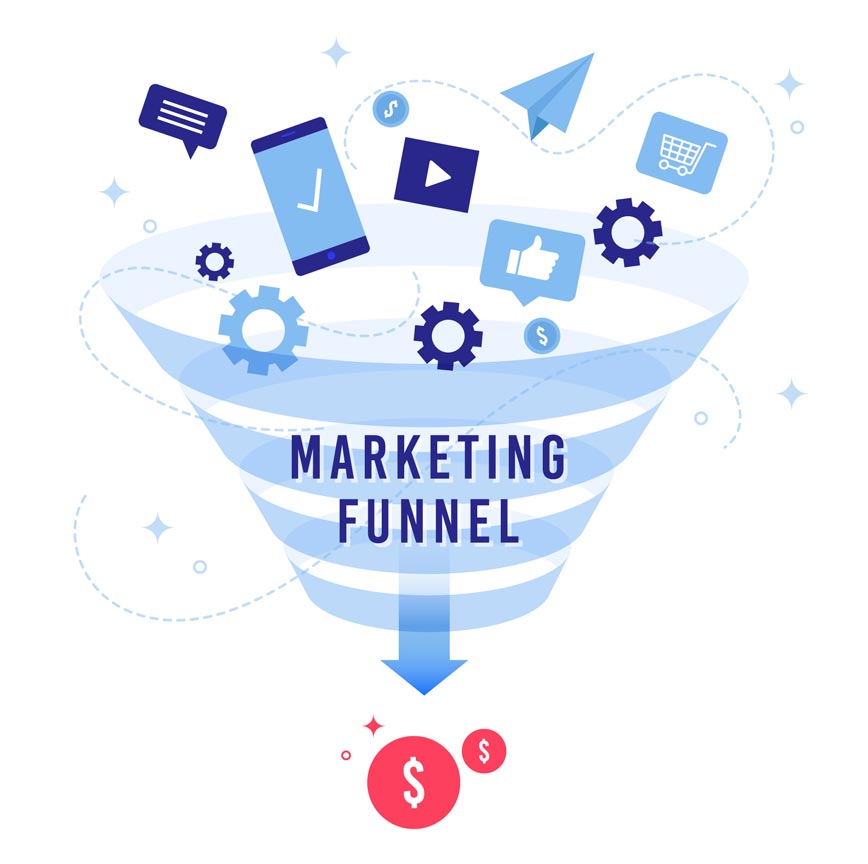
As a business owner or a marketer, if you plan to invest in digital marketing, a foolproof blogging strategy is a must.
In fact, no business today can survive in the online world without creating content. And a major portion of the content is created and circulated as blog posts.
According to a study published by OptinMonster, 57% of marketers say they’ve gained customers specifically through blogging. The same study also indicates that 77% of internet users read blogs.
Promising figures, isn’t it?
After running through all these stats, if you don’t have a blogging strategy in place for marketing, you could be missing out a lot.
But don’t worry, this blog post is meant to help you create a foolproof blogging strategy for your business.
What is a blogging strategy?

A blogging strategy will help you streamline your blogging efforts and achieve better results from it. Especially when you are blogging as part of your marketing activities, it is important to have it well defined.
A well-structured blogging strategy should provide you a blueprint of the blogging activities that you need to execute. This strategy should tell you how and what type of blogs to write, how to promote them and in the end how to get new customers through it.
Why should you build a blogging strategy for marketing?
Without a blogging strategy in place, your efforts can turn aimless.
Here are a few reasons why you need a solid blogging strategy for marketing.
- It will help you produce and publish blog posts consistently.
- A solid blogging strategy will help you better utilize your marketing budget.
- It can help you create blog posts that are well suited for your target customers.
- A blogging strategy can help everyone in your marketing team to work in alignment with a common goal.
- It will help you generate better results from your blogging efforts. This can include more website traffic, more leads and finally more paying customers.
Simply put, lack of a blogging strategy can put your marketing team into a situation where they will be producing irrelevant content to publish inconsistently.
Components of a fool-proof blogging strategy for marketing
To help you create better blog posts and achieve greater results from it, I have broken down the process of crafting a blogging strategy into 9 steps.
 We’ll now deep dive into each of these steps and see what needs to be done.
We’ll now deep dive into each of these steps and see what needs to be done.
1. Define your objective
The objective of your blogging strategy for marketing will define what you need to achieve from all your blogging efforts.
For most businesses, this includes more website traffic, leads and finally more new customers.
You can also divide your objectives into different stages. For example, one part of it can be generating a certain amount of website traffic and another part can be generating leads.
2. Assess your current scenario
Before you start to work on your blogs, you need to assess your current scenario thoroughly. This will help you incorporate better ideas into your blogging strategy.
For example, you can do a blog audit on your website that can answer the below questions.
- How many blog posts do you currently have on your website?
- How many of them are bringing traffic to your website?
- What is the word count of your current blog posts?
- Are your current blog posts well targeted to your audience?
- Are your current blog posts bringing you leads and customers?
You can always add more questions to this list to get a clearer picture of your current blogging scenario.
3. Identify your audience
This is a critical part of any successful blogging strategy. And this applies to not only blogging but to every other marketing activity.
When you are preparing your blogging strategy, you need to identify who your target audience is. And when you write blog posts, it should be targeted at them.
There are multiple ways to classify your audience and build an audience persona. An audience persona will indicate all the qualities of an ideal customer of your business.
An audience persona can be defined on the basis of age, gender, location, education, special interests, buyer behavior etc.
Having a readily defined audience persona in-front of you will help you create laser targeted content.
4. Decide the type of blog posts
There are multiple types of blog posts that you can write for marketing purposes. Some popular types are listed below.
- How-to articles (e.g. how to create a marketing strategy?)
- List posts (e.g. 11 ways you can create amazing content)
- Comprehensive guides (e.g. on-page SEO: a comprehensive guide)
- Comparison posts (e.g. Facebook vs. LinkedIn marketing: which is the best?)
- Studies and research articles (e.g. email marketing benchmarks 2020)
As part of your blogging strategy, you need to decide which type of blog post you are going to publish on your website.
Importantly, you need to make sure all your blog types are adding value to your audience. That means, your audience should be able to solve some of their problems by going through your blogs.
5. Decide the timeline/frequency
When you are blogging for business, your strategy should include a well-defined timeline. Ideally, it should tell you how many blog posts you are going to publish in a month, week or even a day.
Also, you can create and maintain a content calendar that contains details like the blog topics, publishing days, names of authors etc.
This will help you publish quality blog posts consistently on your business website.
6. Choose your methods of promotion
Content promotion is as important as content creation. When you are putting all your efforts into creating awesome content, you need to make sure it is reaching the right audience as well.
Blogs can be promoted in multiple ways. And you need to include your promotion methods in your blogging strategy. Your blogging strategy for marketing should also prioritize your channels for promotion.
For example, some businesses could rely completely on SEO for promoting their blog content. Whereas some others could depend on messenger marketing along with paid ads for the same.
7. Design your conversion funnel
Without this, all your blogging efforts will be in vain. When you create a blogging strategy for marketing purposes, you essentially need to figure out how you are going to convert your blog traffic into leads and paying customers.
The proven way to do this is to build a funnel. A funnel that can take your blog readers to a squeeze page and turn them into qualified leads, or sometimes an offer that pushes them to opt-in for a demo of your product.
In any scenario, you should have your blog funnel designed as part of your strategy.
We’ll discuss more about building funnels from a business blog below.
8. Decide your budget
Once you have a clear picture of your blogging plan, you need to go ahead and decide your budget. Ideally, this should tell you how much you are going to spend on various activities listed in your blogging plan.
For example, your budget should have clearly defined amounts for content creation and content promotion. And from the budget allocated for content promotion, you can divide it among various channels like paid ads and SEO.
Also, you should tie your budget to your monthly goals to have a better track of your return on investment.
9. Choose your performance indicators
The final section of your blogging strategy for marketing should be the measurement. You need to clearly define how you are going to measure the progress of your blogging efforts. In most cases, you can count on certain Google Analytics metrics for this.
Some of the popular metrics that you can focus on are the number of website visitors, page views, traffic sources, goal conversions etc.
To have an even clearer picture, track the number of leads received from your blog posts, and also the number of paying customers who came through some of your blog posts.
Now we have discussed almost all the important aspects of crafting a foolproof blogging strategy for marketing. Now let’s go ahead and find out how we can implement a blogging strategy to reap maximum benefits out of it.
Ways to execute your blogging strategy

Once you have your blogging strategy ready, you can go ahead and look for ways to execute it.
You can follow the below points to well execute your blogging strategy.
- Make sure your whole marketing team is aware of the blogging strategy. The people involved in content creation and promotion should be following the strategy religiously.
- If you are outsourcing content creation to an external team, you have to convey your strategic approach to them as well.
- Have weekly discussions on how you are following your blogging strategy and how it is turning beneficial for your business. If required, minor changes can be made in your strategy based on performance.
Apart from all these, you need to focus more on getting results from implementing your blogging strategy. More on that below.
Make sure your blog posts are bringing organic search traffic
When your blogging efforts are in the right direction, it should get you a tonne of relevant organic search traffic. You absolutely cannot build a solid organic search presence today without a well-crafted blogging strategy.
To ensure your blog posts are SEO friendly, you can follow the below steps.
- Perform thorough keyword research before writing any article. Make sure you are targeting long-tail keywords that are easy to rank for.
- Pick 1 primary keyword and 2 to 3 secondary keywords for each blog post. Then optimize your blog post around these keywords.
- Make sure your blog content satisfies the search intent behind your target keywords.
- For most industries, only long-form articles work these days. Ideally, your blog post length should be somewhere around 2000+ words.
- Include relevant and helpful images within your blog post. You can embed videos if they can add value to your reader.
- Include internal links between your blog posts. You can add some relevant outbound links as well.
- Get relevant, high-quality backlinks to your blog posts. Content quality and backlinks are the 2 most important factors that can decide your rankings on Google search.
Build a community around your blog

When you have a bunch of high-quality value-adding blog posts on your website, it will be a lot easier to build a trusted community around it.
There are multiple channels that you can leverage to build a community around your business blog. Some of the popular methods are building an email list, creating a Facebook group and building up subscribers on Facebook messenger.
Depending on your convenience, you can choose either one or multiple channels from the above-mentioned ones.
If you are relying on email marketing, create a lead magnet that is full of value that can be given away for free to your blog readers. Your blog readers will have to drop their email addresses to gain access to your valuable freebie. This is a proven method to collect leads from your blog. ‘
Facebook groups are also gaining popularity among many businesses. Brands like HubSpot rely on it already and there is a large number of people using it.
Once you have built a community of trusted audience, you can reach them anytime through an email campaign or your Facebook group. You can add more value to them through other forms of content and convert them into paying customers.
A large part of actual lead nurturing can be done through email campaigns. Facebook groups can be utilized for providing support as well as nurturing your community members through more valuable content.
Build a working funnel

We already discussed designing a funnel in the strategy section.
You need to have a working funnel in place to convert your blog readers into leads and from there to paying customers.
Here are a few methods that you can employ.
- Drive your blog readers to a squeeze page and collect their email addresses by offering something in return.
- Send them a series of value-adding emails over a 7 days period. Ideally, you should be teaching them something through these emails.
- At the end of the email series, ask them to take a free demo or a free consultation. If they opt-in for your offer, you can take the sales process to a one-on-one call thereafter.
Well, this is not an ‘exact blueprint’ that will work for everyone. But in a similar manner, you can add various components to your funnel. They can be videos, webinars, e-books or even free consultations until you make a sale.
Actions that make a difference
There are a few things that can make or break your blogging efforts. These are your consistency and content quality.
To build a solid organic search presence and create a steady inflow of traffic, you need to keep publishing articles consistently. Depending on the competition in your niche, it can be 1 article per week or 1 article per day.
And Google now puts a lot of importance on content quality. So you need to make sure that you are only publishing quality content.
Conclusion
I hope I have covered most of the points related to creating a blogging strategy for marketing in this article. You can follow the steps mentioned in this article to develop your strategy and then move on to the execution part.
Importantly, create highly targeted content for your audience, add value to them in every way possible and keep publishing blog posts consistently.
This will surely help you find success from blogging.
Leave a Reply